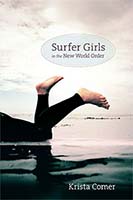Surfer Girls in the New World Order
Today the image of the surfer girl has gone from being an occasional, exotic visual anomaly to having become a mainstay figure of desirable, global, 21st century womanhood. In Surfer Girls in the New World Order Krista Comer demonstrates how this change has come about and why it merits intellectual and political interest. Surfing, she argues, has supplied a language for imagining contemporary global mobility, as well as postindustrial freedom and pleasure, and the visibility of surfer girls is part of a larger discourse about first world girlhood and the future of the western world. Weaving together discourses of globalization, feminism, cyberspace, environmentalism, and international capital, Comer documents a world-wide transformation in which local surf breaks become sites of global culture, of feminist consciousness-raising, of green eco-philosophies, fueled in part by a surfing rhetoric employed by information technology and in part by the historical ability of America's West to mediate a colonial discourse about the direction of western civilization.
The export of California surf culture and, more recently, the role of the California girl as an embodiment of idealized global femininities, are Comer's subjects in Part 1 of this two-part book. She first examines the gendered aspects of surf culture as it changes from the 1950s to the present, paying particular attention to the Gidget legacy, and mid-century concepts of Cold War masculinity and white femininity. Based on evidence from films, magazines, novels, and ethnographic materials, as well as feminist and globalization theory, Comer charts the surfing subcultures evolving implication in global security matters, alternative gender identities, emerging social change, and local and global networks. She considers prevailing generational mythologies about female athleticism and their relationship to global decolonization, world wars, and social movements, and addresses the seminal ways in which the surfing girl revises both second-wave and third wave feminism. In Part 2 Comer examines institutionalized expressions of surfing subculture: businesses, organizations, foundations, initiatives, Using these institutions, Comer analyzes cross-generational conversations about work, play, and sexuality. She presents ethnographic material on surf camps and surf shops in Mexico, California, Hawaii, and Indonesia, addressing the challenges presented by surf industry giants and the promotion of women's surging as a soft-porn enterprise. She highlights a critical concern: in a historical moment when Western societies claim their versions of gender formation are the world's best and should be exported, feminist efforts to expose Western sexism of the present do battle against Western cultural imperialism. She reflects on the historic gender conflicts at, e.g., the surf breaks at Pipeline and Makaha on Oahu, surfers as re-enactments of older western characters like cowboys, pioneers, or mountain men, the role of the Indonesian surf community in the fight against jihadist terror, the debut of the Muslim surfer girl and the full body surfing suit.
Surfer Girls in the New World Order invites us to consider the extent to which rhetorics joining surfing and freedom are defensible as either arguments about globalization or about the subculture of surfing in its global dispersions.
--Reynolds Smith, Senior Acquistions Editor, Duke University Press
